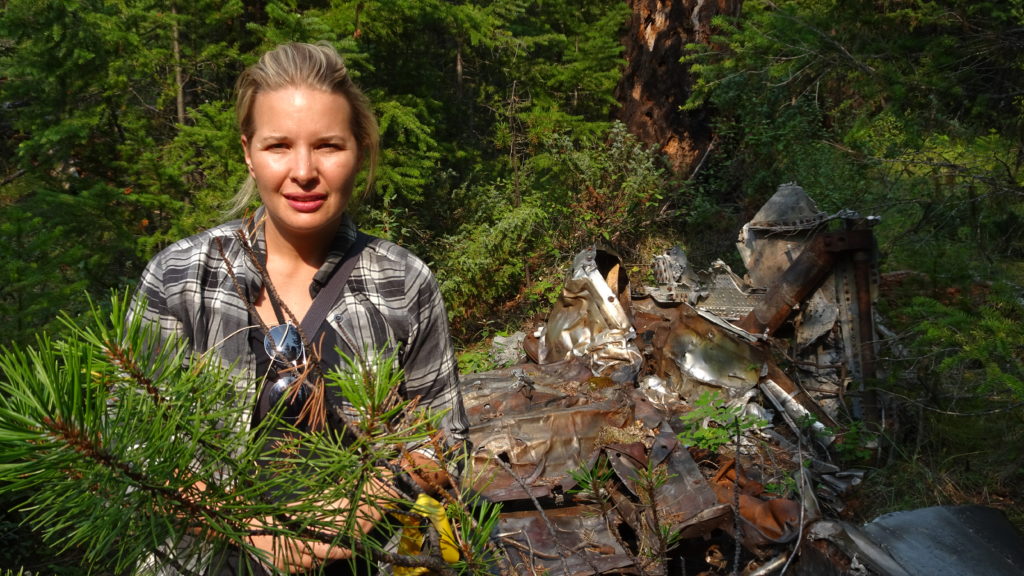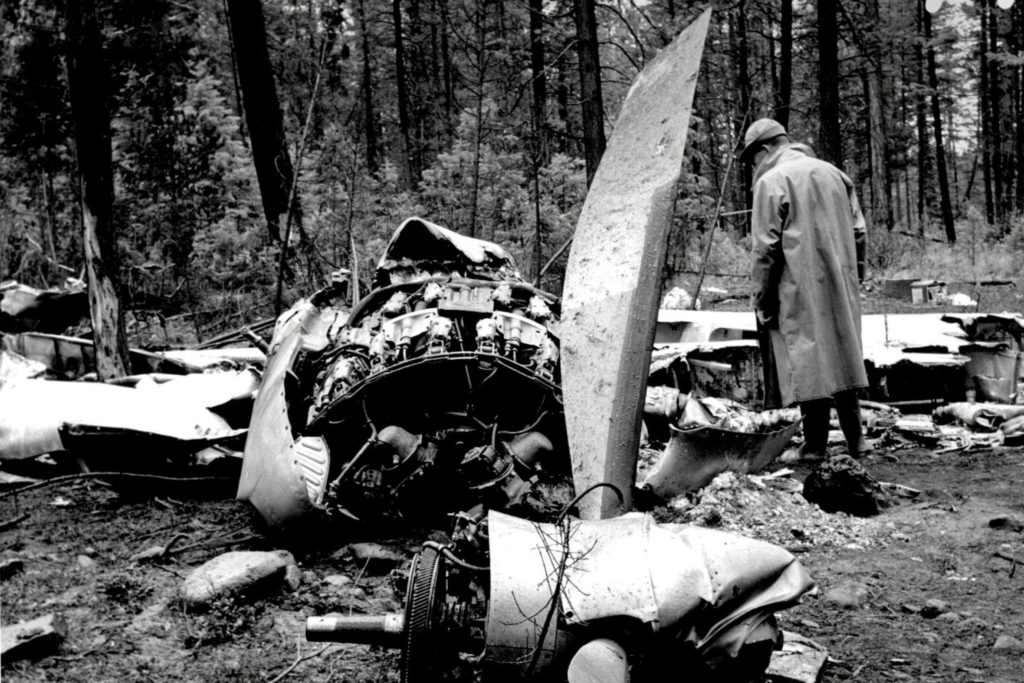Estimated reading time 6 minutes, 55 seconds.
As she approached the twisted metal wreckage of Canadian Pacific Flight 21 for the first time this past summer, Johanna Wagstaffe held her breath and moved forward, careful not to touch anything.

Wagstaffe, a private pilot and CBC journalist, was part of a team investigating the crash for Uncover: Bomb on Board, a CBC podcast that delved deeply into one of the largest unsolved mass murders on Canadian soil.
“It’s almost like whispering in the church,” she said at the time.
“I’m not somebody who is even religious,” she noted later, in an interview with Skies.
“But I find that at these sacred sites around the world, whenever you are visiting a church or a graveyard or a cemetery, there is this element of respect that you want to give, no matter what you believe in.”
Wagstaffe earned her pilot’s licence at age 17 and still flies a two-seat 1943 Aeronca L-3 out of B.C.’s Pitt Meadows Airport with her father, Adam.
Aviation stories have always interested Wagstaffe, and she was naturally drawn to this incident from July 8, 1965, when a bomb exploded in a Douglas DC-6 airliner en route from Vancouver to Whitehorse.
The blast blew off the plane’s tail section and sent it hurtling into a wooded area near the small town of 100 Mile House in the South Cariboo region of central B.C.
All 46 passengers and six crew were killed, including the three pilots.

“There was nothing they could have done in the end, but they tried,” said Wagstaffe.
“Analyzing those last few moments and knowing they cut the engine at the last minute, hoping to reduce speed for a softer landing, that kind of got to me.”
Wagstaffe spent seven months investigating the crash with a team that included Ian Hanomansing, an anchor on The National with whom she worked for many years on CBC News Network.
Hanomansing shares her interest in aviation, and when he mentioned the little-known story of CP Flight 21, Wagstaffe knew it was one that needed to be retold.
“My fascination really does stem from being a pilot,” she said. “I was blown away by the stories that people had to share, and how open they were about how this tragedy affected their lives.”
Wagstaffe and Hanomansing started with the basic facts of the crash and recorded their interactions as they dug deeper into the details, in collaboration with CBC producers.
The arc of the Uncover series mirrors how the investigation played out in real life, gradually painting a more complete picture of the crash as they interview family members of people who died, including four suspects from the original RCMP investigation.
They also went through thousands of documents and consulted several criminologists, an explosives expert and a former crash investigator to see if they could determine who set off the blast.

“I don’t know if we ever thought we’d be able to solve it,” said Wagstaffe. “But I think we were both surprised at how much information was out there, and how much light we were able to shed on the case.”
They encountered several challenges along the way, including family members who initially didn’t want to speak on the record.
Ultimately, many changed their minds, and the investigative team was able to interview close relatives of all four main suspects.
The sensitivity of dredging up the crash was something the investigative crew spent hours talking about, knowing the family members would be listening, said Wagstaffe.
“We didn’t want to cause them pain a second time around,” she said. “We were definitely able to narrow some things down and make some big conclusions.
“But I think that we’re still missing a big part of this story, and I don’t know if somebody out there has the answer. Maybe the more this story gets out there, maybe somebody does have that one missing piece that we need.”
The six-episode podcast has been downloaded millions of times, and Hanomansing starred in a separate video documentary that aired on The National on Dec. 10, 2018.
As they worked, Wagstaffe couldn’t help but think about how she would have handled herself as the plane went down.
Her thoughts centred on what it must have been like for the three pilots who died, sending out a mayday call, throttling the engines up and down and keeping the plane parallel to the ground.
“I think that they absolutely were heroes,” she said. “There would have been a loud noise, there would have been screaming, they would have felt the decompression.
“There would have been so much going on in the cockpit that the fact that they were able to attempt to do what they could, with what control surfaces they had left, absolutely makes them heroes.”








